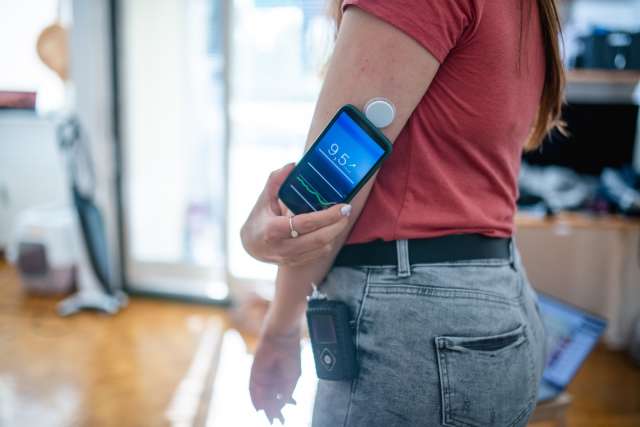While a continuous glucose monitor (CGM) is primarily for patients with diabetes to help them keep track of their blood-sugar levels, an increasing number of people who are not diabetic are using the devices to assist them in making changes to their diets.
“We never know how people are going to react to different foods, so wearing a CGM can help guide them with their choices,” said Vijaya Surampudi, MD, an endocrinologist and assistant professor of medicine in the UCLA Health Division of Human Nutrition.
Even if someone does not have diabetes, they may have a degree of insulin resistance or may be on the pre-diabetes spectrum where certain foods can push their blood sugar to unhealthy levels.
“Everyone says oatmeal is great, but for some people, they eat oatmeal and their blood-sugar level shoots up over 200,” Dr. Surampudi said. “With a CMG, they can identify that and recognize that oatmeal perhaps is not the best food for them.”
Benefits of tracking glucose levels
Food can have a major influence on glucose levels, but it is not the only trigger that can affect your blood sugar. The cites multiple factors that can impact your glucose levels:
- Lack of sleep: If you’re not getting good sleep, your body can use insulin less effectively.
- Coffee: Some coffee drinkers may not know that their blood sugar levels are sensitive to caffeine.
- Dehydration: Glucose levels are more concentrated when your body doesn’t have enough water.
- Exercise: Some forms of cardiovascular exercise can lower glucose levels, while some high-intensity and weightlifting .
- Skipping breakfast: If you regularly skip breakfast, your glucose levels can rise after lunch or dinner.
- Stress: A rough day at the office or a contentious argument with a friend or spouse can increase blood sugar levels.
It is not all upsides to wearing a CGM
Wearing a CGM may help someone who is not diabetic make informed nutritional choices, but it also has the potential to cause users to become overwhelmed by the information.
“I’ll give a personal example,” Dr. Surampudi relates. “During my pregnancy, I was concerned that I would get gestational diabetes, and I wore one. But I became overly cautious because of the blood-sugar readings on the sensor, and I wasn’t eating enough. Despite knowing what I know, it got the better of me.”
In addition, CGMs don’t always generate completely accurate readings because the sensor measures glucose levels only in the interstitial fluid between skin layers, not in the bloodstream. Nonetheless, Dr. Surampudi said the devices are still effective.
“The most accurate thing we have for measuring exact glucose levels are actual blood draws,” Dr. Surampudi said. “But when we’re talking about trends and patterns, a CGM does a great job.”
To learn more about CGM devices visit the Gonda Diabetes Center at UCLA Health.




